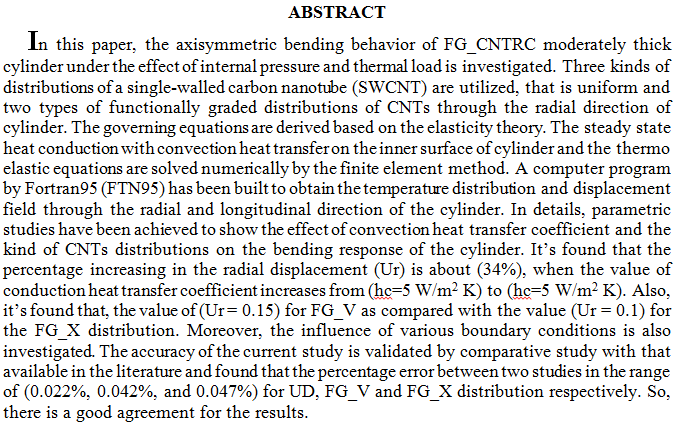
This research is concerned to investigate the behavior of reinforced concrete (RC) deep beams strengthened with carbon fiber reinforced polymer (CFRP) strips. The experimental part of this research is carried out by testing seven RC deep beams having the same dimensions and steel reinforcement which have been divided into two groups according to the strengthening schemes. Group one was consisted of three deep beams strengthened with vertical U-wrapped CFRP strips. While, Group two was consisted of three deep beams strengthened with inclined CFRP strips oriented by 45o with the longitudinal axis of the beam. The remaining beam is kept unstrengthening as a reference beam. For each group, the variable considered
... Show MoreNormal concrete is weak against tensile strength, has low ductility, and also insignificant resistance to cracking. The addition of diverse types of fibers at specific proportions can enhance the mechanical properties as well as the durability of concrete. Discrete fiber commonly used, has many disadvantages such as balling the fiber, randomly distribution, and limitation of the Vf ratio used. Based on this vision, a new technic was discovered enhancing concrete by textile-fiber to avoid all the problems mentioned above. The main idea of this paper is the investigation of the mechanical properties of SCC, and SCM that cast with 3D AR-glass fabric having two different thicknesses (6, 10 mm), and different layers (1,2 laye
... Show MoreCarbon fiber reinforced polymers (CFRP) were widely used in strengthening reinforced concrete members
in the last few years, these fibers consist mainly of high strength fibers which increase the member capacity in addition to changing the mode of failure of the reinforced concrete beams. Experimental and theoretical investigations were carried to find the behavior of reinforced concrete beams strengthened by CFRP in shear and bending. The experimental work included testing of 12 beams divided into 4 groups; each group contains 3 beams. The following parameters were taken into consideration: - Concrete crushing strength. - CFRP strengthening location (shear strengthening and both shear and flexure strengthening). Reinforced beams were
 (2)
(2)
 (9)
(9)
 (8)
(8)
In the present work a theoretical analysis depending on the new higher order . element in shear deformation theory for simply supported cross-ply laminated plate is developed. The new displacement field of the middle surface expanded as a combination of exponential and trigonometric function of thickness coordinate with the transverse displacement taken to be constant through the thickness. The governing equations are derived using Hamilton’s principle and solved using Navier solution method to obtain the deflection and stresses under uniform sinusoidal load. The effect of many design parameters such as number of laminates, aspect ratio and thickness ratio on static behavior of the laminated composite plate has been studied. The
... Show MoreIn this study, nanocomposites have been prepared by adding
multiwall carbon nanotubes (MWCNTs) with weight ratios (0, 2, 3,
4, 5) wt% to epoxy resin. The samples were prepared by hand lay-up
method. Influence of an applied load before and after immersion in
sodium hydroxide (NaOH) of normality (0.3N) for (15 days) at
laboratory temperature on wear rate of Ep/MWCNTs
nanocomposites was studied. The results showed that wear rate
increases with increasing the applied load for the as prepared and
immersed samples and after immersion. It was also found that epoxy
resin reinforced with MWCNTs has wear rate less than neat epoxy.
The sample (Ep + 5wt% of MWCNTs) has lower wear rate. The
immersion effect in base so
 (3)
(3)
 (1)
(1)
In present work examined the oxidation desulfurization in batch system for model fuels with 2250 ppm sulfur content using air as the oxidant and ZnO/AC composite prepared by thermal co-precipitation method. Different factors were studied such as composite loading 1, 1.5 and 2.5 g, temperature 25 oC, 30 oC and 40 oC and reaction time 30, 45 and 60 minutes. The optimum condition is obtained by using Tauguchi experiential design for oxidation desulfurization of model fuel. the highest percent sulfur removal is about 33 at optimum conditions. The kinetic and effect of internal mass transfer were studied for oxidation desulfurization of model fuel, also an empirical kinetic model was calculated for model fuels
... Show More